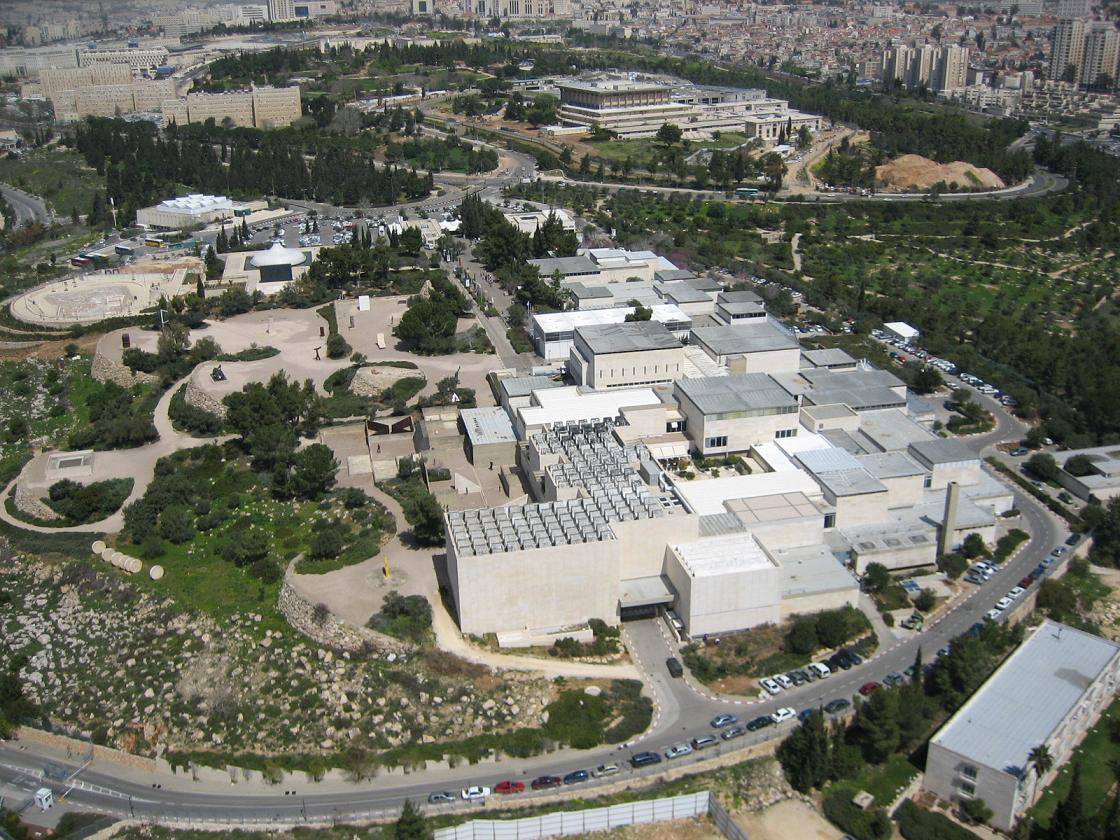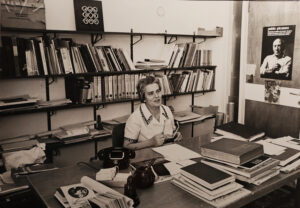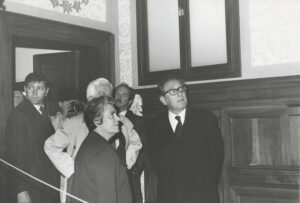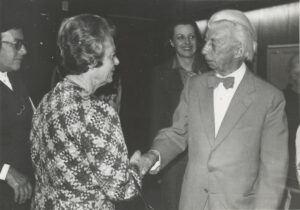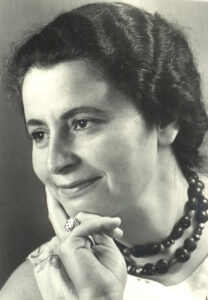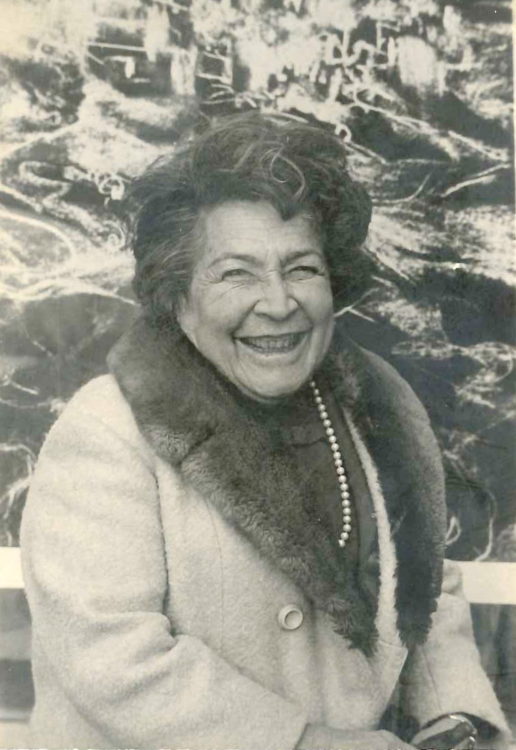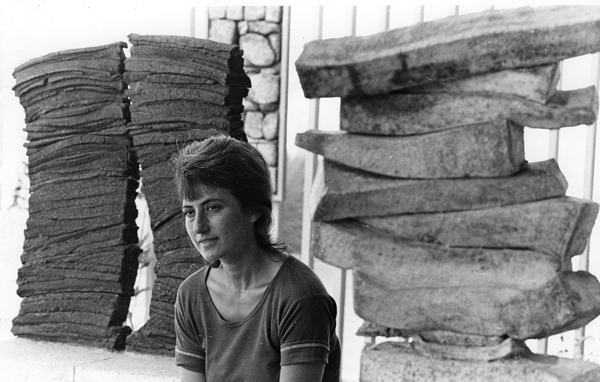Research
Elisheva Cohen and Ayala Gordon were active at the Israel Museum of Jerusalem in the second half of the 20th century. Each contributed to the development of museum infrastructure in Israel. E. Cohen was a pioneer in setting professional standards for curation and museology, while A. Gordon was an authority on museum education in Israel.
E. Cohen and A. Gordon began their professional journeys in the late 1950s and early 1960s, at the Bezalel National Museum (Beit HaNechot Bezalel) in Jerusalem; this small Jewish-Zionist museum was the first to be founded in Palestine (1906). Both women took part in establishing the Israel Museum, the country’s largest and its only encyclopedic museum, a process that began in 1957 and continued until its opening in 1965. The collections of the Bezalel National Museum, as well as most of the staff, were transferred to the Israel Museum.
The two foundational myths of the young state of Israel developed in parallel and impacted material culture: on the one hand the distant, biblical past, backed up by archaeological finds, among them the Dead Sea Scrolls and skeletons from the time of the Bar Kokhba revolt, and on the other the recent devastation – the Holocaust – which brought into Israel artworks by victims and gifts from Jewish donors.
The process of building the Israel Museum thus involved an attempt to balance universal-modern notions and Zionist ideas; to bridge the developments and tensions within Israel and events in the Jewish world in the years following the Holocaust; and also to merge the aspiration to establish an institution that would serve as a national symbol and a recognition of the need to preserve the museum’s professionalism and independence.1 E. Cohen and A. Gordon faced the social and professional challenge, using various means to set uncompromising museal and ethical standards.
E. Cohen (1911-1989) was born in Frankfurt-am-Main as Elsa Binyamin. She studied art history at Munich University and then continued her studies at the University of Zurich, where she specialised in early German prints and printing techniques under the guidance of the influential art historian Heinrich Wölfflin. With the Nazis’ rise to power, in 1933 she quit her PhD programme and immigrated to Palestine.
More than 20 years after interrupting her studies, at the age of 44 E. Cohen decided to approach Bezalel National Museum, an institution she visited frequently; she belonged to its friends association for many years. She was interested in the museum’s collection of prints and drawings, which was kept in four rustic cupboards, with no organisation, and was unknown to the public. She volunteered to organise it in the hope of renewing her interest in graphic art. Mordechai Narkiss (1898-1957), the director of the museum from 1925 to 1957, offered her the job for a small salary. On 1 January 1956, after a preparatory tour in Europe (visiting museums and print collections in Italy, France, England and the Netherlands), she began working at the Bezalel National Museum on a half-day basis.2
The Bezalel National Museum’s prints and drawings collection was gradually developed from 1925, with the pace picking up after World War II. During those years many shipments arrived of artworks previously owned by German Jews who had perished in the Holocaust and gifts from collectors and artists – among them Pablo Picasso (1881-1973), Henri Matisse (1869-1954) and Marc Chagall (1887-1985). The system of small booklets with loose papers (instead of a card catalogue) E. Cohen adopted for the collection’s catalogue, mainly for reasons of economy, was the same as that used by the Rijksmuseum in the Netherlands, and was in use at the Israel Museum for years. Furthermore, she insisted on having two parallel catalogues, one according to name and the other according to subject. In 1957, upon M. Narkiss’s death, Karl Katz (1929-2017) was appointed director of the museum. The American K. Katz brought with him new standards of fundraising. He often travelled, appointing E. Cohen as acting director in his absence, in addition to her responsibility for the graphic collection. In 1960, E. Cohen received two study grants. She trained for three months in the print department of the British Museum and nine months at Harvard University’s Fogg Museum. The expertise she acquired during that year was crucial to the planning and establishing of the Israel Museum.
When the Israel Museum opened, E. Cohen was appointed head of the prints and drawings department, and in 1968 she also became chief curator of the Bezalel Wing, the arts section of the Israel Museum. She held these two positions until she retired in 1975 and continued as a consultant at the museum for five more years.

From left to right: Elisheva Cohen, Shula Arieli, Yona Fischer, Isidor Aschheim and Jacob Steinhardt at the Bezalel Museum, Jerusalem, 1960s © Fritz Shlezinger
When the Israel Museum opened, E. Cohen was appointed head of the prints and drawings department, and in 1968 she also became chief curator of the Bezalel Wing, the arts section of the Israel Museum. She held these two positions until she retired in 1975 and continued as a consultant at the museum for five more years.
Over the years E. Cohen’s warm connections with collectors and donors led to the enrichment of the museum’s graphic collection with masterpieces by Francisco de Goya (1746-1828) and P. Picasso, among others. Her most significant curatorial commitment to a contemporary artist was to Anna Ticho (1894-1980). The long and amicable relationship was unwavering, and resulted in A. Ticho leaving the Israel Museum her entire estate (more than two thousand drawings and paintings) including her home in Jerusalem, which became an exhibition space.

Elisheva Cohen and Theodor Teddy Kollek (the mayor of Jerusalem from 1965 to 1993), 1973 © David Harris
The question of the place and the scope of Israeli art – and separately, Jewish art – in the collection and display was a critical ideological issue at the Bezalel National Museum and later at the Israel Museum. In exhibitions curated by E. Cohen of Rembrandt (1606-1669), F. Goya, Albrecht Dürer (1471-1528), Edvard Munch (1863-1944), P. Picasso, Käthe Kollwitz (1867-1945), Hermann Struck (1876-1944), Leopold Krakauer (1890-1954), Jacob Otto Pins (1917-2005), Jacob Steinhardt (1887–1968), Miron Sima (1902-1999), Jules Pascin (1885-1930), A. Ticho and others, there was an attempt to establish a link between European masters and artists, primarily Germans, who came to Palestine, or later Israel, in the first half of the 20th century, and had lived and worked there. At the same time, in her position as chief curator of the art wing at the Israel Museum, she maintained a non-nationalist direction, characterised by an open approach to contemporary art exhibitions curated by Yona Fischer (1932-2022), the young curator of Israeli, modern, and contemporary art.
E. Cohen was a trailblazer, not in the radical sense of shattering accepted norms and definitions, but by laying them down and fortifying them. The diligence and knowledge typical of her curatorial work were aimed at nurturing and preserving artistic achievements and establishing standards for museums in Israel. Like many other intellectuals, writers and artists of her generation such as Else Lasker-Schüler, Paul Celan, Stefan Zweig, Hannah Arendt and many more, after being forced to emigrate from Europe during the Third Reich, she had a complex relationship with her homeland, with the German language, and European tradition and art.
A significant part of E. Cohen’s work was laying the foundation for the education and training of curators in Israel. This necessity came up during her work at the museum since there were no professional curators in any domain. She began teaching an informal, short course at the museum in the late 1970s and early 1980s, and when the first formal course in museology opened at Tel Aviv University in 1985, E. Cohen was part of its design and taught there.
In the late 1970s, after retiring, E. Cohen joined Yehudit Kol-Inbar (b. 1948), a key figure in the development of museums in Israel and their study. Each week for 14 years they visited different museums throughout the country, mapping them, and advising on maintenance, conservation, cataloguing, display and more.
Unlike E. Cohen, Ayala Gordon (b. 1930) grew up in Jerusalem, receiving her education there before studying in the United States. Her studies included art at Bezalel Academy of Art and Design in Jerusalem, followed by ten years in the United States, where she had earned two degrees: one in teaching art education at Columbia University’s Teachers College in New York (1951-1954), and the other in art history at Columbia University (1954-1958). She wrote her thesis on the development of abstraction in the art of Wassily Kandinsky (1886-1944) between 1910 and 1924 under the supervision of the art historian Mayer Shapiro.
Upon her return to Israel in 1960 she started working at the Bezalel National Museum, initiating educational programmes in the small space allotted to her in the attic, tailored to the local community’s needs. Jerusalem in those years was a city divided between Jordan and the State of Israel and saturated with political and sectarian tensions. The goal was to create an art education platform that could bridge gaps and combine making art with the study of art history, an element that was missing from school curriculums. A. Gordon wanted the school and the museum to complement one another, enhancing the effectiveness of children’s learning with regard to abilities and socio-economic backgrounds. She realised that working independently of the changing political currents was necessary to bring all parts of the population closer to the museum and art.3
In 1966, a year after the opening of the Israel Museum, the new Youth Wing was completed, dedicated to pedagogical exhibitions and to active engagement. The improved conditions meant access to broad and varied collections, exhibitions of art, ethnography and archaeology, and larger audiences, leading to extensive activity that placed the Youth Wing on a level with institutions in the world that had most developed museal education.4
Alongside activities such as practical workshops for children and adults, docent services for the museum’s various departments provided by artists, and continuing education for teachers in Hebrew and Arabic, exhibitions represented the capstone of the programmes, inviting direct experience of the artworks through touch: original works from the museum’s collections were placed side-by-side with models, reconstructions, reproductions, enlarged photographs, video projections, and work environments and artworks created especially for the exhibition that could be touched. The main goal of these exhibitions was to create an experience of magic and surprise, arouse interest and curiosity, and activate the imagination. The opening exhibition was about a fundamental issue, The Land (1966). It showed how natural raw materials like clay, stone, pigments and glass have served human creativity in different cultures from ancient times to the present, and created affinities between local art, craft traditions and modern art. Later there were exhibitions on puppet theatre (1967), sculpture games (1972), paper (1975), animated movies (1975), self-portraiture (1981), reality and illusion (1982), the sense of touch (1984), and more. The educational exhibitions attracted audiences of all ages and often allowed adults to overcome barriers distancing them from modern and contemporary art. During her tenure as director, from 1966 to her retirement in 1991, A. Gordon curated some 50 educational exhibitions and helped create many more.
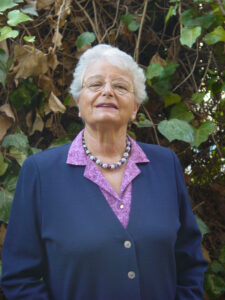
Portrait of Ayala Gordon before getting the Prize of Special Achivement in Education, 2006 © Amirav Gordon
In 1978 a new, larger building, about 3,600 square meters, was dedicated to the Youth Wing. It was more suited to the growing range of the areas activities, which included a recycling centre, an art journal, and a library of illustration containing several thousand illustrated children’s books. As an illustrator by training, A. Gordon aspired to blur the boundary between illustration and art. The library and other initiatives of hers, such as the establishment of an illustration prize and historical exhibitions about illustrated Hebrew children’s books were revolutionary.
The Youth Wing at the Israel Museum is the lifework of a woman of vision, knowledge, and action, a trailblazer on an international level. The impact of A. Gordon’s educational-cultural enterprise continues to fertilise the field of museal education in Israel to this very day.
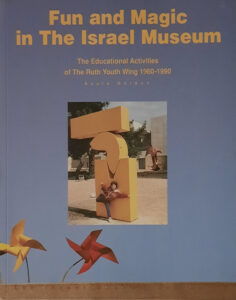
Ayala Gordon, Fun and Magic in the Israel Museum: The Educational Activities of the Ruth Young Wing 1960–1990 (Jerusalem: The Israel Museum, 1996)
E. Cohen and A. Gordon belonged to different generations and were trained in different approaches to museology, European and American respectively. Discussing them together allows a broader view of female initiatives in the largest museum in Israel and the only one that is encyclopaedic. E. Cohen laid the foundations of classical museology in the art department and was a partner in the institutionalisation of museology in Israel. A. Gordon acted from a social perspective and from a sense of urgency. She believed in the pedagogical power of teaching through art and by artists to bridge social gaps and build common denominators of knowledge and cultural experience in a young state full of political and ethnic tensions and security issues. Their pluralist and liberal aspects and steadfast belief in human creativity and the museum’s formative power made them both agents of change and engendered a heritage of openness and respect for humans and their material culture.
Though the work of both these women lacked a declarative feminist tone, they acted as chief curators alongside a group of male museum directors and senior curators. In retrospect, the lines of thought they fostered and the fabric of the infrastructures they created allow us to formulate a feminism that is not declared or adversarial but a pioneering female action that sets up a new agenda.
Gilit Ivgy, “The History of the Foundation of the Israel Museum as a National Museum, 1957–1965” (PhD thesis, Hebrew University, Jerusalem, June 2017).
2
Elisheva Cohen, “Bezalel and Me”, undated. Elisheva Cohen’s private papers are held in the house of her daughter Yehudit Bar-Chen in Tel Yitzhak, Israel.
3
Ayala Gordon, Fun and Magic in the Israel Museum: The Educational Activities of the Ruth Young Wing 1960-1990 (Jerusalem: The Israel Museum, 1996).
4
Ibid.
Osnat Zukerman Rechter is a researcher and lecturer focusing on Israeli art, the history of exhibitions and contemporary curating. She holds a PhD from the Hebrew University of Jerusalem. Her book on contemporary curating in Israel between 1965 and 2010 was published in Hebrew in 2020 by Resling publishing house. She currently serves as Program co-director and Academic Consultant of the Yona Fischer Certificate Program in Contemporary Curatorial and Museum Studies at the Institute for Israeli Art at the Academic College of Tel Aviv-Yafo, Israel.
An article produced in Partnership with Artis
Osnat Zukerman Rechter, "Elisheva Cohen and Ayala Gordon: Museology as a Social Challenge." In Archives of Women Artists, Research and Exhibitions magazine, . URL : https://awarewomenartists.com/en/magazine/elisheva-cohen-et-ayala-gordon-la-museologie-comme-defi-social/. Accessed 19 December 2025
